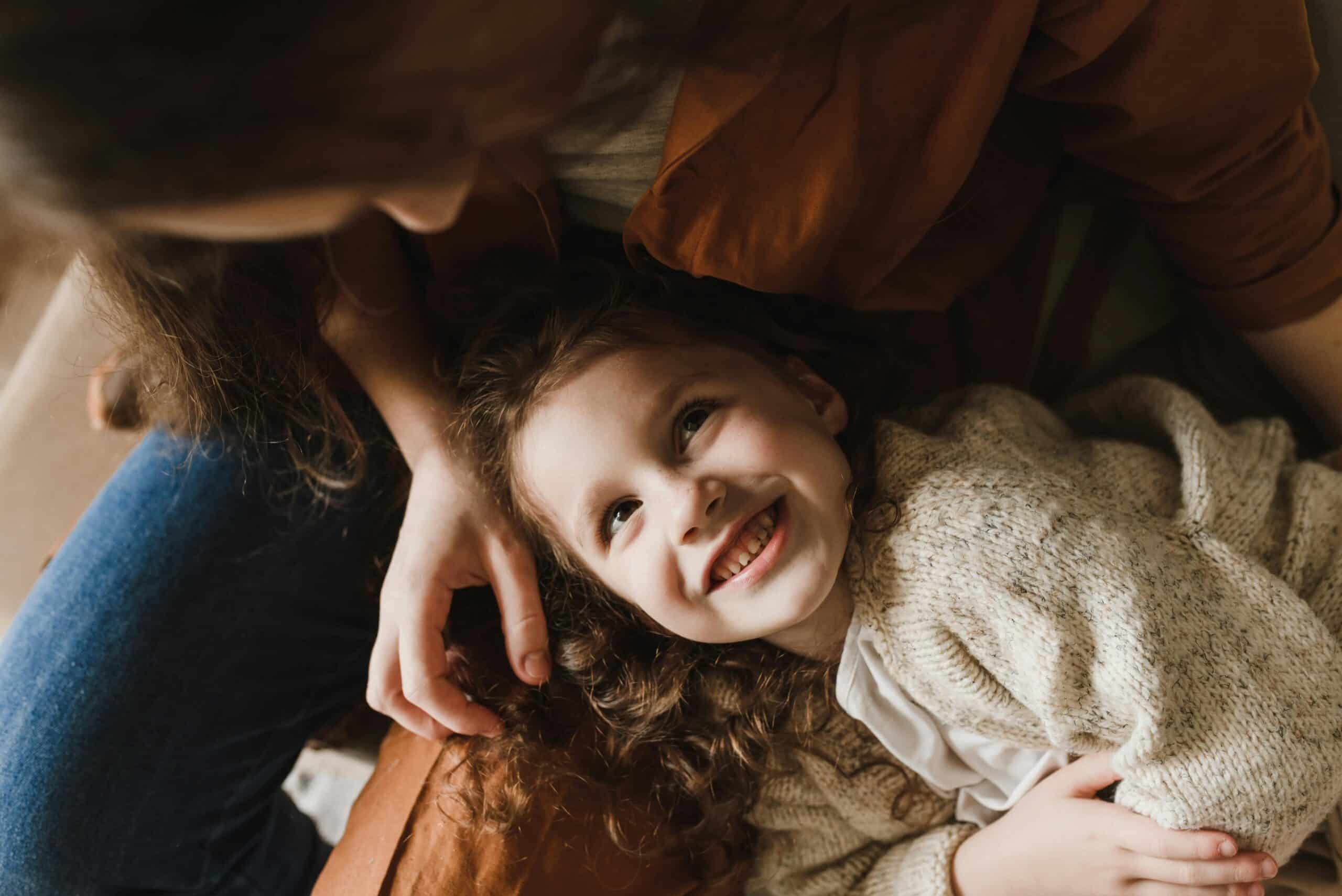Child Development Research, Insights, and Science Briefs to Your Inbox
Key takeaways for caregivers
- Adoptive families and adopted people are, first and foremost, families and people. Adoption adds a trait, but it is not a definition (and, of course, it is not a pathology).
- Adoptive families and adopted people share the adoption aspect of their background but they are a group of families and individuals that is otherwise very diverse. It is inappropriate to draw conclusions about all adopted people or adoptive families.
- Adoption occurs when children experience some type of adversity that makes it important for their caregiving situation to change. Thanks to adoption, the future is transformed but the past does not disappear.
- Therefore, post-adoption experiences should promote recovery from any pre-adoption struggles, development, and a healthy adoptive identity. Adoptive parents’ lifelong commitment and stimulation are key ingredients in a positive post-adoption trajectory.
This blog is based on research originally published in Román, M., Carrera, P., Palacios, J., & Moreno, C. (2025), Emotion understanding in internationally adopted children and children in residential care: Developmental periods and mediation by language. International Journal of Behavioral Development, 49(3), 252-262.
Common assumptions about the struggles of adopted children
People sometimes make insensitive comments about adoption based on ignorance or misunderstandings about what adoption involves. Although common assumptions might apply to some adoptees, many are often inaccurate.

Photo by olia danilevich on Pexels
Even in the field of adoption research, comparisons between adopted and non-adopted people can lead to conclusions that inappropriately suggest that being adopted indicates a lifetime of troubles and being different (often in negative ways).
In our work, we have addressed some of these assumptions by considering specific patterns and clarifying takeaway messages. With a deeper understanding of the data, we see that adoption can help children recover from difficult circumstances and transition onto a path of healthier development.
Cautions about comparing adopted and non-adopted children
Much research on adoption (including ours) has compared adopted and non-adopted people. Documented differences between these groups often suggest that adoption is inevitably related to challenges with social, emotional, or cognitive development. But the differences are not necessarily as meaningful as they might seem at first, and they might not even be due to adoption itself.
The specificity of differences between adoptees and non-adoptees
When differences are found between these two groups, they are often limited to a smaller set of adoptees experiencing substantially more difficulties. Most adoptees in these studies are more similar to than different from non-adoptees.
The differences identified by the research tend to occur in certain areas, such as attention and hyperactivity problems, which are significant in terms of their impact on school performance and, sometimes, on relationships with others. Inevitably, in the development of personal identity, adoption adds a layer of complexity that may not appear in non-adopted individuals.
The roles of adopted children’s difficult early childhood experiences and subsequent care
Adoption is an intervention intended to help children who experience very challenging pre-adoption circumstances, including neglect, abuse, or institutional living.
Research on adopted individuals’ development often involves a comparison group of non-adopted people who are less likely to have had those challenging early childhood experiences, instead enjoying stable emotional bonds and healthy relationships with caregivers. It is not surprising, then, that more problems or difficulties are sometimes found in those with more negative early experiences.
Research comparing adoptees and non-adoptees
We have been conducting research on adoption for more than three decades. One of our longest-running studies began more than 20 years ago and is still ongoing: the Longitudinal Adoption & Institutionalization Study conducted at the University of Seville, Spain (LAIS.US).
Like much adoption research, our study compares a group of adoptees with a group of non-adoptees. The adopted group includes Russian children adopted into Spanish families at about three years old, in many cases following a period of living in poor conditions in large institutions in their homeland. The non-adopted group includes Spanish children who lived with their birth families and had no contact with the child protective system.
A third comparison group: Children in collective care
A unique addition is our third comparison group, Spanish children who experienced adverse circumstances in their birth family and were placed in small residential communities for protective care starting around age five years. Both the children adopted from Russia and this third group had difficult early childhood backgrounds and lived in improved circumstances through intervention.
A key detail is that the third group was in collective care. Although the Spanish residential care communities were smaller and provided higher-quality support than the large Russian institutions, children in the third group did not experience the individualized and committed nurturing typically provided by an adoptive family.

Photo by Pavel Danilyuk on Pexels
Comparing children’s development over time
We started our research when the children were on average six years old. Since then, we have been studying the children, families, and caregivers every three to four years. The children are now on average 21 years old.
Adoption vs. collective care
Over time, children with backgrounds of early childhood adversity can catch up, in some ways, with children who have not experienced such difficulties. In fact, our results have shown the effectiveness of adoption, specifically, as a protective measure that promotes recovery processes: The adopted children have performed significantly better in many aspects than the children who also experienced early adversity but grew up in collective residential care.
Impact on attachment disorders
For instance, symptoms of attachment disorders, such as emotional withdrawal or disinhibited social behavior, have decreased over time in the adopted children. By a few years after their adoption, their symptoms of attachment disorders were, on average, similar to levels in the group of non-adopted children who did not experience early adversity.
In contrast, children with prolonged stays in residential care showed an increase in attachment difficulties as they navigated life in their residential homes.
Impact on development
Our study has also highlighted how different areas of development recover at different rates in the same individual. For example, for children with significant developmental delays at adoption, physical development tended to recover faster than emotional development, indicating the need these children have for continued positive emotional, cognitive, and social support.
How adoption helps children catch up on specific skills: Understanding emotions
In a recent article, we illustrate some of these ideas about how adoption can help children recover from early adversity.
We analyzed children’s emotion understanding – a sociocognitive skill that enables individuals to comprehend emotions in themselves and others – in the three groups of children in our study. Since this skill has emotional and cognitive foundations in infancy and early childhood, we expected that the children with adverse early experiences would show more difficulties in this domain than the children in the community group.
We also expected that the adopted children, once protected from the initial adversity by committed cognitive and emotional support from their adoptive family, would catch up to the children in the community group in abilities to understand emotions. In contrast, we expected the group of children growing up in the more negative circumstances of collective care to take longer to catch up.
Our study results confirmed these hypotheses when the children were in middle childhood (between four and eight years old), with the adopted children catching up to their community peers more quickly by showing greater emotion understanding than their counterparts in the residential care group. There were two additional key insights.
1. More complex aspects of emotion understanding take longer to develop and recover
First, as a group, adopted children were similar to children in the community group in terms of simpler aspects of emotion understanding (e.g., recognizing how memories and beliefs can influence emotions), which typically develop before more complex skills.
However, the adopted children still lagged behind the children in the community group in more advanced aspects of emotion understanding involving skills such as:
- Emotion regulation: e.g. use of distraction to manage emotional states
- Mixed emotions: e.g. feeling both anxious and excited about a situation
- Moral emotions: e.g. positive emotions linked to actions considered morally correct
This finding indicates that recovery is not immediate and requires continued stimulation and commitment from the adopters, especially when it comes to more complex matters, such as, in this case, the more mature elements of emotion understanding.

Photo by Arina Krasnikova on Pexels
2. Differences in language development affect emotion understanding
Second, adopted children’s remaining difficulties in emotion understanding were partially attributable to deficits in language skills that were necessary not only for this activity, but also, more broadly, for the development of social cognition.
However, the children adopted from Russia outperformed the Spanish children in residential care in their ability to understand and comprehend spoken language, even if the adoptees had to learn it at ages well beyond typical language acquisition periods.
Our finding that difficulties in language competence were related to limitations in understanding more complex emotions illustrates the fact that the various developmental domains (e.g., physical growth, emotions, cognition, language, social skills) are interwoven and interdependent.
When a parent tells a story to a child sitting on their lap or converses with a teenager about the joys and difficulties of the day, they can simultaneously enrich language, strengthen security of attachment, and promote a better understanding of others and the world.
Adoption as a lifelong commitment
Adoption involves an adult committing to a child’s future without ignoring the child’s past. Integrating a child into family life, parents can embrace the child’s past and the potential impact early adversity may (or may not) have on their future development.
By adopting a child who went through difficult circumstances, a family can provide individualized, continued support for the child’s development. Different types of families can respond to this challenge.
With this committed care, adoptees can have a more positive life trajectory that is similar in many ways to that of non-adoptees. Families should keep in mind that along with these improvements, the traces of early adversity and the construction of a more complex identity inevitably contribute to the child’s history and personality.
This work is part of the R+D+I Projects SEJ2006-12216, PSI2015–67757-R and PID2020-115836RB-I00 funded by MICIU/AEI/10.13039/501100011033 and ERDF A way of making Europe.
References
- Palacios, J., Román, M., Moreno, C., León, E., & Peñarrubia, M.G. (2014). Differential plasticity in the recovery of adopted children after early adversity. Child Development Perspectives, 8(3), 169-174
- Román, M., Carrera, P., Palacios, J., & Moreno, C. (2025). Emotion understanding in internationally adopted children and children in residential care: Developmental periods and mediation by language. International Journal of Behavioral Development.
- Román, M., Palacios, J., & Minnis, H. (2022). Changes in Attachment Disorder symptoms in children internationally adopted and in residential care. Child Abuse & Neglect.
- van IJzendoorn, M. H., Bakermans-Kranenburg, M. J., Duschinsky, R., Fox, N. A., Goldman, P. S., Gunnar, M. R., Johnson, D. E., Nelson, C. A., Reijman, S., Skinner, G. C. M., Zeanah, C. H., & Sonuga-Barke, E. J. S. (2020). Institutionalisation and deinstitutionalisation of children 1: A systematic and integrative review of evidence regarding effects on development. The Lancet Psychiatry, 7(8), 703–720.
